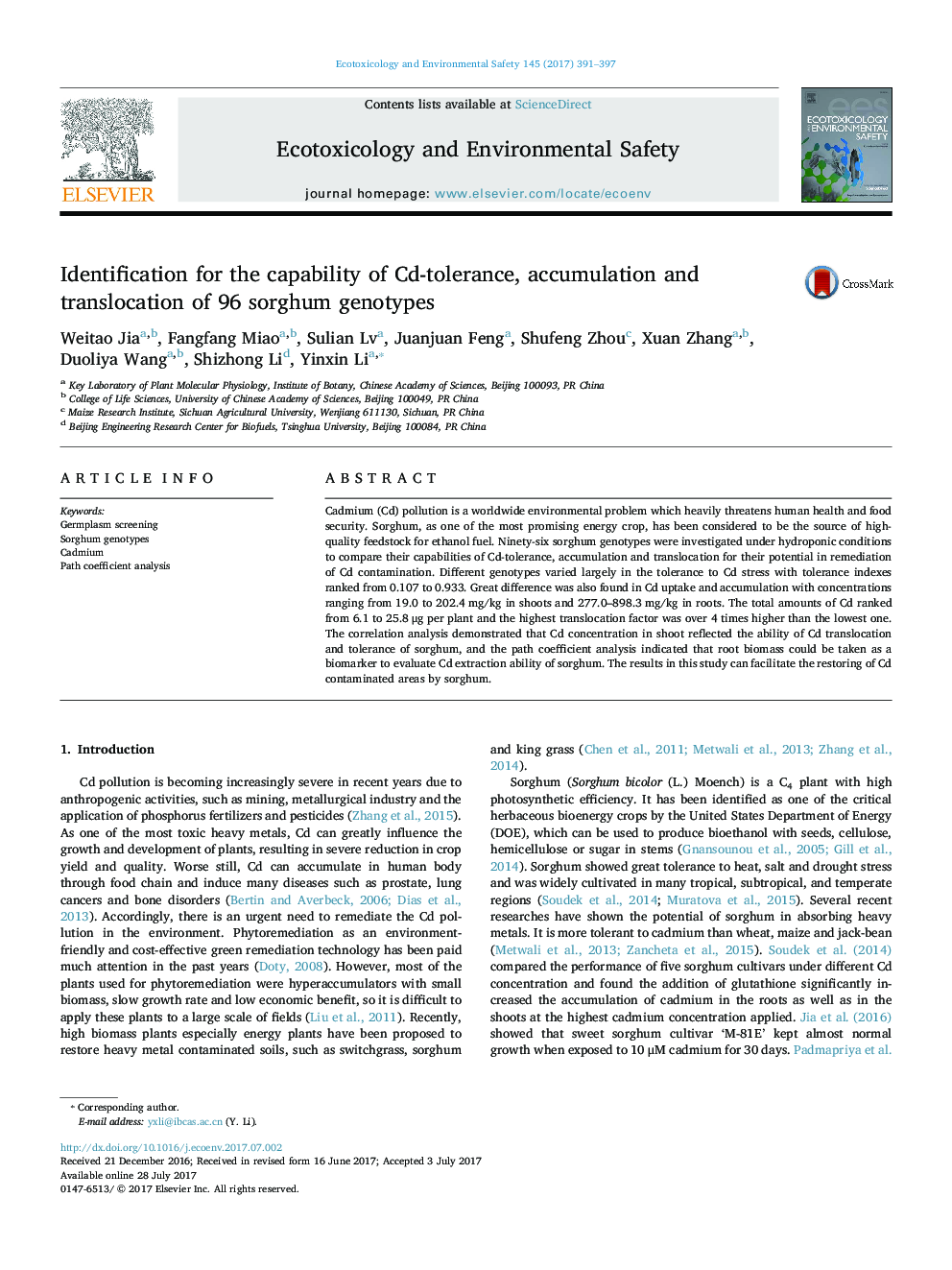| Article ID | Journal | Published Year | Pages | File Type |
|---|---|---|---|---|
| 5747779 | Ecotoxicology and Environmental Safety | 2017 | 7 Pages |
â¢Cd tolerance, uptake and translocation varied greatly among sorghum genotypes.â¢Shoot Cd concentration reflected the ability of Cd tolerance and translocation.â¢Root biomass was a biomarker to evaluate Cd extraction ability of sorghum.â¢Valuable sorghum genotypes of Cd extraction were screened out for further use.
Cadmium (Cd) pollution is a worldwide environmental problem which heavily threatens human health and food security. Sorghum, as one of the most promising energy crop, has been considered to be the source of high-quality feedstock for ethanol fuel. Ninety-six sorghum genotypes were investigated under hydroponic conditions to compare their capabilities of Cd-tolerance, accumulation and translocation for their potential in remediation of Cd contamination. Different genotypes varied largely in the tolerance to Cd stress with tolerance indexes ranked from 0.107 to 0.933. Great difference was also found in Cd uptake and accumulation with concentrations ranging from 19.0 to 202.4 mg/kg in shoots and 277.0-898.3 mg/kg in roots. The total amounts of Cd ranked from 6.1 to 25.8 μg per plant and the highest translocation factor was over 4 times higher than the lowest one. The correlation analysis demonstrated that Cd concentration in shoot reflected the ability of Cd translocation and tolerance of sorghum, and the path coefficient analysis indicated that root biomass could be taken as a biomarker to evaluate Cd extraction ability of sorghum. The results in this study can facilitate the restoring of Cd contaminated areas by sorghum.
